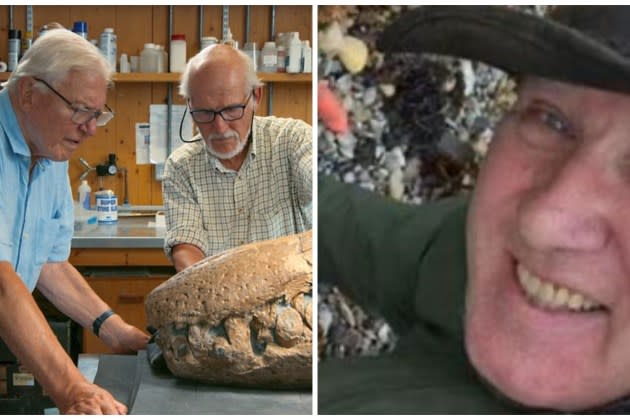BBC Adds Credit For Amateur Fossil Finder Into David Attenborough ‘Sea Monster’ Doc After Criticism Over “Airbrushing”
- Oops!Something went wrong.Please try again later.

The BBC has given additional credit to the man who discovered the fossilized remains of the pliosaur at the center of a critically acclaimed David Attenborough doc, after facing criticism for “airbrushing” him out.
The lack of credit for amateur fossil hunter Philip Jacobs in Attenborough and the Giant Sea Monsters caused more than 5,000 people to sign a petition criticizing the British public broadcaster, cause the BBC to take action.
More from Deadline
A caption has now been added to the program on streamer BBC iPlayer, noting the footage of the initial discovery was from Jacobs. His name is also now at the top of a credits section and Jacobs has written a piece on the discovery for the BBC website.
In a statement to the Guardian, Jacobs said: “While it would have been nice to have my name actually spoken by Sir David, rather than being [described as] ‘a fossil enthusiast’, I am pleased that the BBC has made amends and I would like to thank the producer for working on trying to correct this omission.”
BBC Studios Natural History Unit produce the show, which documents the “discovery of a lifetime.” The program went out on BBC One and BBC iPlayer on New Years Day (January 1) and was met with widespread acclaim. It followed the dig that followed Jacobs’ initial discovery.
However, numerous members of the palaeontology community criticized the amount of credit given to Jacobs, whose name was broadly omitted from the program. Sir Randolph Fiennes last week said it was an “absolute disgrace” and “utterly shameful,” while palaeontologist and TV presenter Dean Lomax called it a “real oversight.”
After the initial story broke, Jacobs said The Etches Collection, the independent museum organization that worked with the BBC on the film, was “doing everything in their power to see that there is full attribution as to who first discovered the giant pliosaur.” The specimen has gone on display at The Etches Museum in Dorset, UK.
Best of Deadline
2024 Premiere Dates For New & Returning Series On Broadcast, Cable & Streaming
2024 Awards Season Calendar - Dates For Oscars, Emmys, Grammys, Tonys, Guilds & More
Step & Repeat Gallery: The Best Red Carpet & Party Photos Of 2024
Sign up for Deadline's Newsletter. For the latest news, follow us on Facebook, Twitter, and Instagram.

